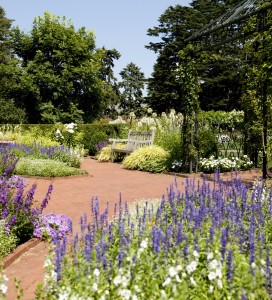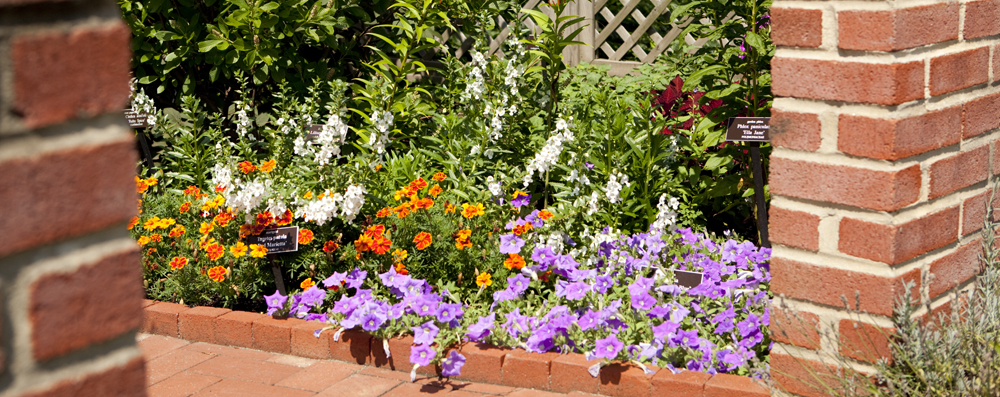Plant Profile: Unusual Annuals in the Home Gardening Center
Posted in Gardening Tips, Gardens and Collections on July 24 2012, by Sonia Uyterhoeven
Sonia Uyterhoeven is the NYBG‘s Gardener for Public Education.
 As you walk through the Home Gardening Center and peer into the Trial Beds, you will see some unusual sights this year. The Trial Beds are well represented with plants from a number of exotic places such as New Zealand, Sri Lanka, Indonesia, Africa, and Thailand.
As you walk through the Home Gardening Center and peer into the Trial Beds, you will see some unusual sights this year. The Trial Beds are well represented with plants from a number of exotic places such as New Zealand, Sri Lanka, Indonesia, Africa, and Thailand.
When you enter the Garden, the first bed is a riotous collection of oranges, chartreuse, and gold. One of the centerpieces of this display is a plant that is indigenous to Sri Lanka, Indonesia, and Cambodia. Flag bush, or Buddha’s lamp (Mussaenda frondosa), is a tender shrub. In this region it will grow to look more like a large perennial than a shrub, reaching about three or more feet in one season. It has large white poinsettia-like bracts and small, bright orange flowers. You can place the flag bush in full sun or partial shade. It likes rich, well-drained soil, so remember to amend your soil with organic matter such as compost before you plant.
As you work your way back into the Trial Beds, you will notice something that looks familiar but out of place. Dwarf papyrus (Cyperus papyrus ‘King Tut’) is the centerpiece of another Trial Bed. Papyrus is generally considered an aquatic plant that is grown by the edge of a pond, thought it is also commonly grown in containers that have their drainage holes sealed to provide a soggy environment. ‘King Tut’ needs to be kept nice and moist when it is planted, but once establish in a garden bed it is moderately drought tolerant. It thrives in full sun to partial shade and grows between four and five feet tall.
While the papyrus provides a soft, upright foliar accent to your garden design, another Trial Bed has something that will overwhelm you with its massive, broad foliage. The giant elephant’s ears (Colocasia gigantea ‘Thailand Giant’) can reach up to nine feet tall in the wild, and grows on average to five feet tall and four feet wide in the New York area.

Often you see both the genus Alocasia and that of Colocasia referred to as elephant’s ears. It is an apt description for both genera. The primary difference between the two (and there are always exceptions) is that Alocasia needs good drainage while Colocasia can handle more moisture. Colocasia is better than its counterpart in full sun; both genera thrive in partial shade. Alocasia leaves tend to lie horizontally while the foliage on Colocasia tends to point downward.
If you walk to the back of the Trial Beds, you will notice another unusual annual tucked into a bed that is awash with silver and raspberry reds. Astelia ‘Silver Shadow’ is native to New Zealand. It has green, sword-like foliage that transmutes into silver and reminds me of a cordyline. It is an easy care annual that likes full sun and can handle a dry or windy site. Next week we will be looking at more unusual annuals in the Garden.

